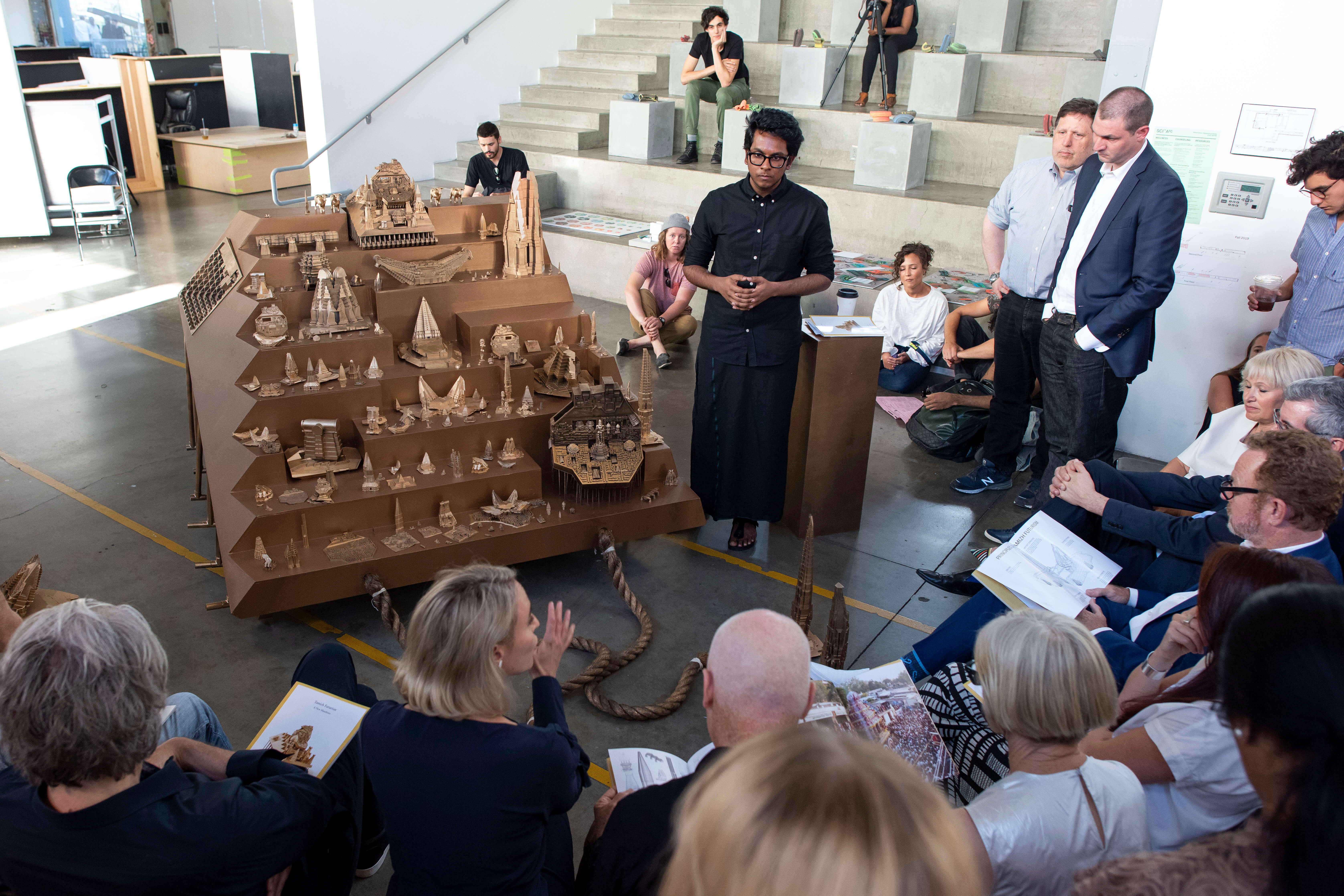The history of student work at the Southern California Institute of Architecture (SCI-Arc) goes as far back as its founding in July 1972. Founded by Ray Kappe, the innovative school of experimental architecture provides students with countless opportunities to discover, explore, and push the limits of design.
Its largest annual event, SCI-Arc Graduate Thesis Weekend, is where critics, architecture professionals, as well as faculty members and students come together to celebrate uncommon visions. Each year the graduate thesis students select their individual disciplinary position which culminates in rigorous project that is reviewed by world-renown industry professionals and critics. Like the SCI-Arc experience as a whole, graduate thesis is conducted in a fluid, nonhierarchical manner to rethink assumptions; to create, explore, and test the limits of architecture.
It’s a reflection of the school’s emboldened view on architecture. Whether it’s at the undergraduate, graduate or postgraduate level, students are spurred to find radically new responses to the real needs and aspirations of today’s world. Below are the stories of three of these innovative scholars, their unique journeys as students, and the school that inspired them all.

Source: SCI-Arc – Olivia Billingsly
Olivia Billingsly and Allyn Viault
Works of art belong just as much outside exhibition spaces as they do inside. B.Arch students Olivia Billingsly and Allyn Viault are the founders of Design Students for Action (DSFA), a student-led coalition organising community-based aid for unhoused citizens of Los Angeles. “As my father and I drove around Los Angeles during the pandemic and witnessed so many homeless people and others in need, I felt the need to act,” Billingsly shares.
DSFA held its first supply drive on Aug. 29 and 30, teaming up with Feed the Streets Los Angeles and Los Angeles Students Deserve to assemble care packages, create school kits, and make clothing bundles for both students and the homeless — each a manifestation of the connection between design education and advocacy. “Through sustainable architecture and affordable housing, we see architecture/design as a departure point for action and mutual aid,” Billingsly shares.
Ryan Scavnicky
Ryan Scavnicky (Design Theory and Pedagogy ’17) is a filmmaker, creative director, and visual artist based in Los Angeles. After graduating from SCI-Arc’s postgraduate programme in Design Theory and Pedagogy, he was asked to work on an innovative new project for the school called Clip Joint. The project is a SportsCentre-style breakdown of Slavoj Zizek and Graham Harman’s “duel and duet” for SCI-Arc Channel. “It was an incredible experience and I got to work with the best of the best,” he shares.

Source: SCI-Arc – Ryan Scavnicky uses memes to reach students via social media in order to inform architecture
Commenting on how his practice evolved or shifted both as a result of his SCI-Arc experience and studies and the life and work he’s been involved in since, Scavnicky says, “SCI-Arc changed everything for me, while guiding me to become more completely myself. It opened doors which have augmented my ability to create the changes I hoped to see in the discipline.”
Today, he is living the dual-career he had hoped for — working on small architectural projects while teaching design studio and a theory seminar. “My post-school career began with a fellowship appointment as the Visiting Teaching Fellow at the School of Architecture at Taliesin concluding in spring of 2019. This year I launched a small practice in Ohio called Extra Office and I will be teaching at The Ohio State University and Kent State University this fall,” he adds.
Charite Carballo
M.Arch 1 student Charite Carballo is an alum of the Making+Meaning programme, a four-week career exploration and portfolio building summer studio programme that introduces students to architectural experimentation and transformative design techniques in a unique and lively studio setting. As an incoming M.Arch 1 student, she wanted to prepare for the next step of her education journey with an intensive programme. M+M, which teaches digital modelling, rendering, animating, and video making software, provided that.

Source: SCI-Arc – Charite Carballo, Making+Meaning project image, 2020
Her proudest project from the programme was the diagrammatic images she composed. “The first set of exercises in the second half of the course required a specific attention to colour, light, and boundary in order to compose an image that had more to it than meets the eye,” she explains. “The daily requirement of producing resulted in a constant act of trial and error. I eventually came to my personal style of production.”
Before M+M, she had never considered the practice of hacking. That changed after the programme. “Our limitations to the digital environment required us to use the software in inventive and imaginative ways,” Carballo says. “We would shuffle between different digital programmes, using Rhino to model, Photoshop to texturise, and gaming engines to render. Contrary to popular belief, it was easy to model as there was an encouragement for imperfection and spontaneity.”













